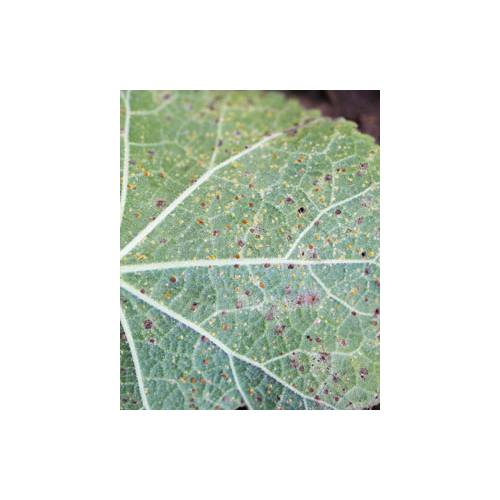
Diseases
Leaf rust
- Details
-
This disease is perfectly described by its name because it does look like rust! It can look spectacular but it is not life threatening for the plant. It is particularly found on roses, hollyhocks and members of the leek family as well as certain shrubs.
The symptoms
On the leaves that are not fully developed little orange dots appear, which stick out and get bigger. A few weeks later they take on a powdery texture, a sign that the disease is about to spread with the fungus responsible entering its reproductive stage. The leaves that are heavily attacked can become deformed. In all cases, they will turn yellow and drop prematurely.
Lifecycle
It begins with the germination of a spore (a microscopic germ that resembles a dust particle) on the surface of the leaf. Often the spore is carried to the plant via a raindrop, which has bounced of the ground. The spore will develop filaments in the tissue of the leaf and proliferate; this causes withered patches in areas. When favourable conditions arrive, that is to say warm and wet, the rust will need only a few days to develop. When conditions become unfavorable, namely too cold or too dry its development is interrupted. If the plant is growing at the time then the young leaves will be unharmed.
How to fight it
Rust is a fungus that is treatable with sulphur-based products and by plant extracts that are effective against pathogenic fungi. At the beginning of an attack, there is no need to use these solutions: you can simply remove the affected parts to avoid the disease spreading. It is only if there is a generalised attack that you need to think of spraying, either soluble sulphur or an extract of diluted horsetail.
How to avoid it
Use varieties that are resistant to disease, especially for roses and vegetables that are susceptible to rust, this will reduce the risk. In the vegetable patch, a damp soil will encourage the propagation of disease. Also, do not leave diseased leaves around the base of the plant. Like other diseases, rust is opportunistic which attacks weakened parts of the plant like the leaves at the end of the season. Its appearance signifies that it is time to remove the tired vegetation rather than proceed with a treatment! On the other hand, the use of companion plants that are supposed to keep disease at bay (like garlic) have little effect if any at all!
Information
Like powdery mildew (white powder on leaves), the rust that attacks one plant cannot contaminate a different plant. For example, the rust from a rose cannot be transmitted to a leek. It is only because the conditions are favourable to the development of the fungus that we see the apparition of rust on different plants at the same time. - Photos (1)

